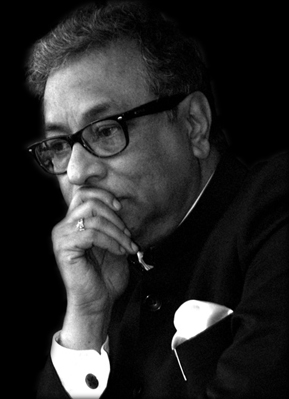Just two centuries after Christianity was legitimised by Roman Emperor Constantine and Christians were no more thrown before lions, the church flexed its muscles and declared that the Roman celebration of the first of January was too pagan.
Around midnight of December 31, when several people in India will sit before their television sets (the rest will be busy at parties), they will invariably be greeted with visuals of places in New Zealand, Australia, Japan and Korea that have already celebrated “Happy New Year”, with skylines flaring up in panoramic colours and revellers rocking in sheer joy. West of us, we will see the massive, glitzy gatherings at Trafalgar Square in London or at Times Square in New York. Many Indians wonder why on earth we can’t have one grand Indian New Year, with our great Hindustani euphoria. After all, 1.4 billion Chinese have a single new year, which is extremely colourful and known all over the world.
Actually, our situation is that we have more than one new year — we have two major new year seasons, as well as one minor one. Our different regions, peoples, and cultures have decided, quite democratically and through history [,] when to celebrate their respective new years. We did not have to abide by the edicts of any Caesar or Pope to accept one single date. In Europe, Pope Gregory XIII introduced the Gregorian calendar in 1582 to replace the old Julian calendar and rectify the mismatches that had crept in. This Gregorian calendar was immediately adopted by Catholic countries, while reluctant Protestant European nations took time, but finally adopted it. The problem of when exactly to celebrate the first day of the year continued, nevertheless. Just two centuries after Christianity was legitimised by Roman Emperor Constantine and Christians were no more thrown before lions, the church flexed its muscles and declared that the Roman celebration of the first of January was too pagan. It moved the New Year’s day to March 25, on the Feast of the Annunciation. This was close enough to the spring equinox, which falls usually on March 21 or 22, and close to Easter, as well.
What is interesting is that this date is very close to the first major date on which about 35-40% of Indians celebrate their new year — the Chaitra Shukla Pratipada, i.e., the start of the bright lunar fortnight of Chaitra (March-April). It is called Gudi Padwa by Maharashtrians, Ugadi or Yuga-adi by Kannadigas and Telugus, Cheiti Chand by Sindhis, Nowroz by Parsis and Kashmiris, and Thapna by conservative Marwaris. In Andhra Pradesh and Telangana, apart from special dishes, an interesting mixture called Ugadi Pachhadi is made of six contrasting tastes, which must have been a medicinal potion. Spring brought in not only joy but sorrow as well — because it carried deadly viruses and diseases.
It is clear that diversity rules India much too strongly, and this is one area where there is little scope for uniformity on One Nation, One New Year.
More than half the Indians, however, observe their new year during Baisakhi, which is between April 13 and 15, as they follow their own solar calendars. The two different phases usually depended on the winter Rabi crop being ready, which called for celebrations. The western and central Deccan started festivities in March as their traditional crop was ripe then, while others waited till Baisakh for their harvest and new year. This second slot for the new year in Baisakh is celebrated in Punjab as Baisakhi, in Mithila of Bihar as Jude Sheetal, in Bengal as Pohela Baisakh, in Assam as Bohag or Rongali Bihu, in Odisha as Pana Sankranti, Puthandu in Tamil Nadu, Vishu in Kerala and so on. Though customs vary, Indian New Year celebrations involve a lot of music, dance, good food and a mandatory dose of piety. Each one of these Baisakh festivals has deep cultural and religious significance for each region and is sentimentally rooted in its history.
Then, we have an important variation beyond the two bunches of regional New Years is concerned, as the Gujaratis believe in starting their new year from the frisky lunar day of auspicious Diwali.
The popular Hindu almanacs, the panchangas, also vary from region to region and also within each region. They usually follow the Saka reckoning but forget that it was instituted by Indo-Sythian invaders who swept in from the Kazakh steppes of Central Asia, and marked it from 78 AD. The other very important calendar, the Vikram-samvat is popularly believed to have been started by one Vikramaditya of Ujjain in 57 BCE, but Kielhorn says that this era was hardly known till the 9th century CE. There was also a Vedic new year that began Agrahayan, in celebration of the Vernal equinox. Astronomers Aryabhatta, Varahamihira and Bhaskara also contributed to the “Indian calendar”.
After Independence, Jawaharlal Nehru was keen to settle this vexatious problem of finding a common Indian Era and he entrusted the task to the legendary astrophysicist, Meghnad Saha. The Saha Committee decided to end the long journey from the Vedas to Vikramaditya in favour of the Saka calendar. But this official new year flopped, as even officials hardly knew or cared about it. Attempts were also made at different times to unite the solar and lunar calendars, but they too failed.
It is clear that diversity rules India much too strongly, and this is one area where there is little scope for uniformity on One Nation, One New Year.
